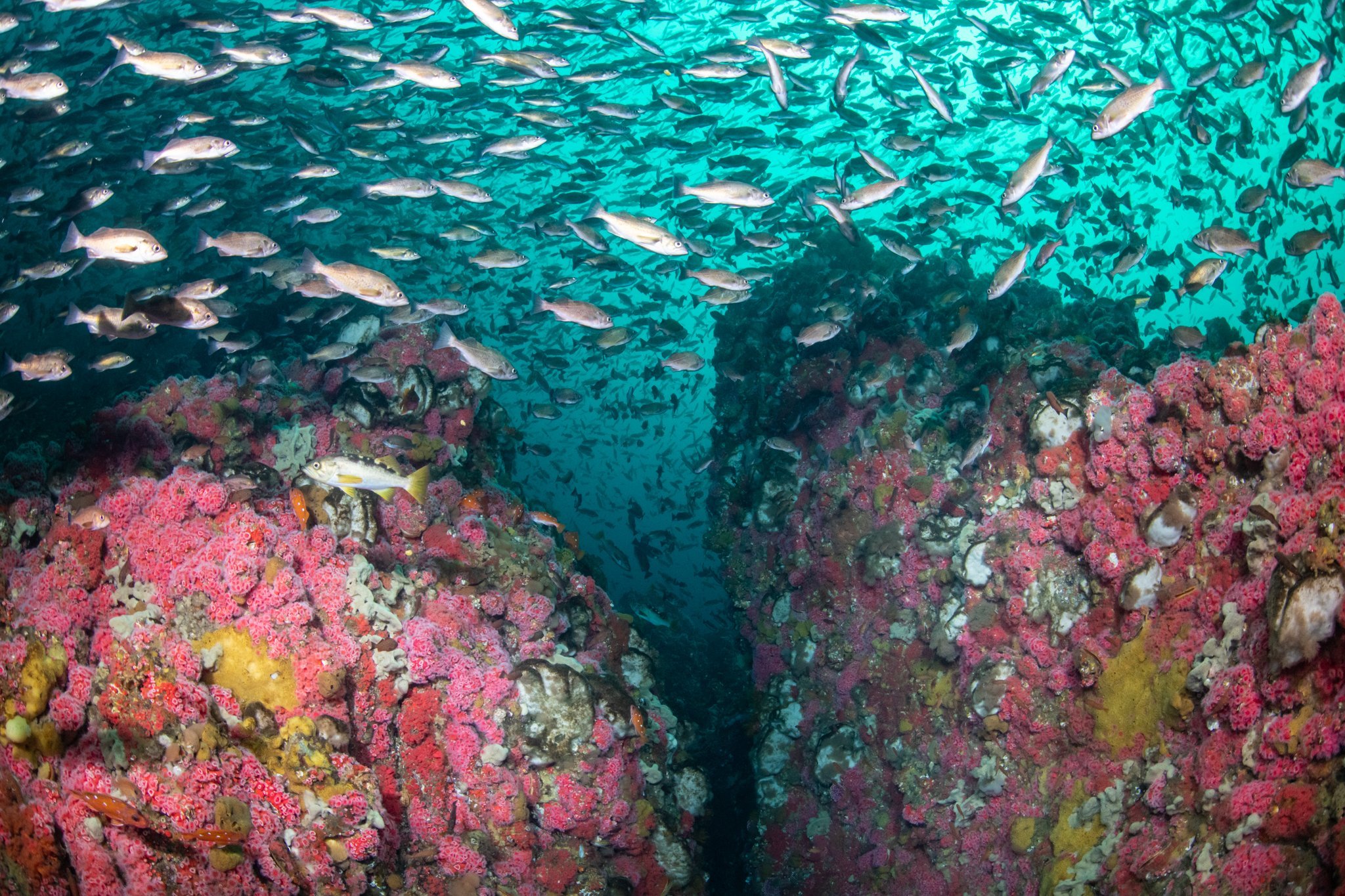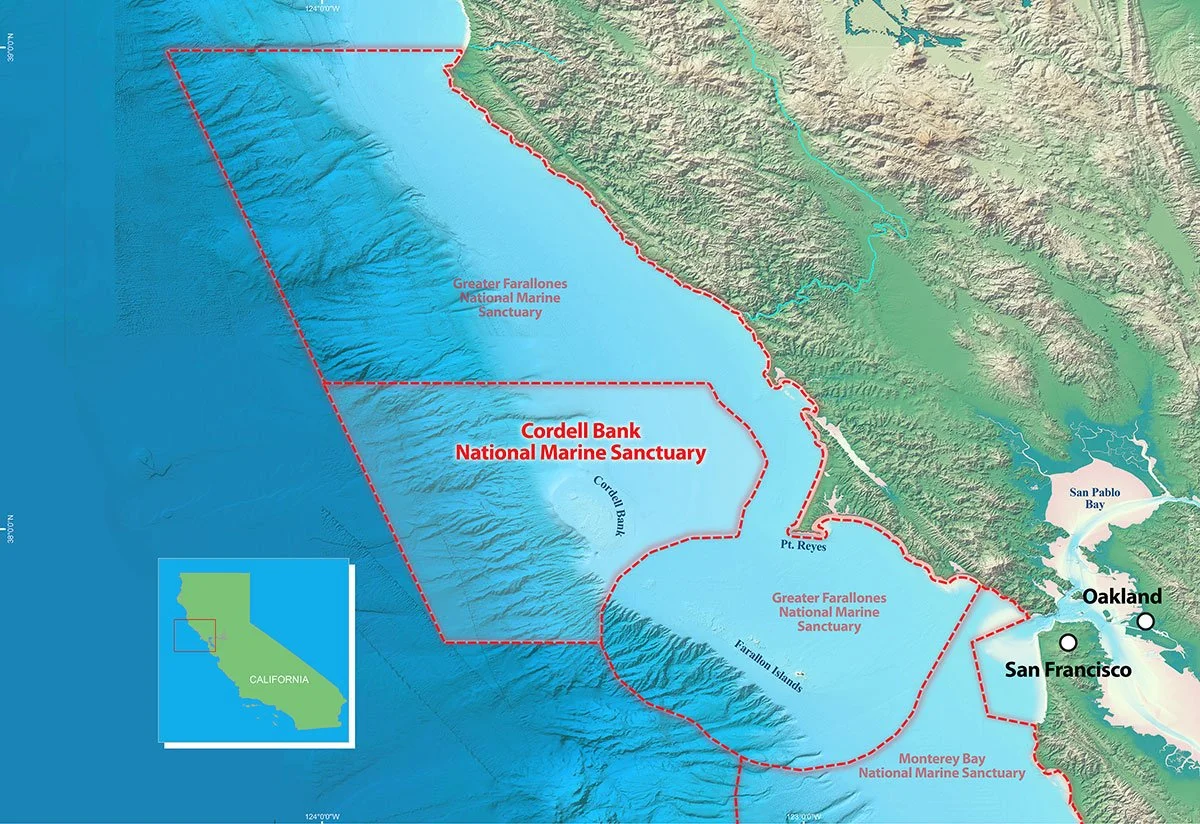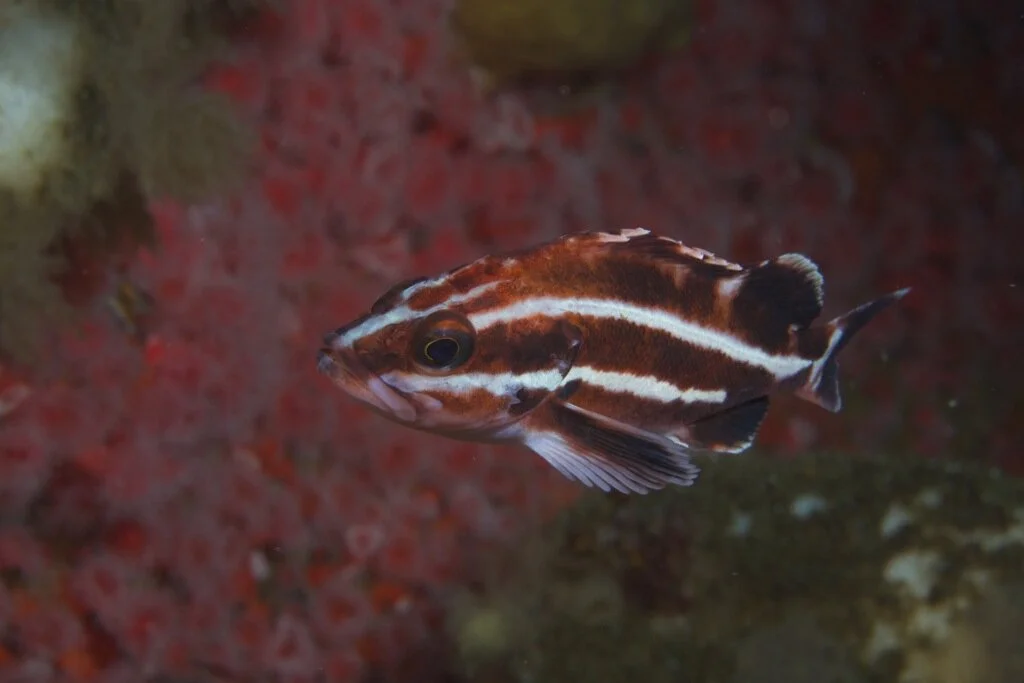
BAUE Cordell Bank Project
Cordell Bank National Marine Sanctuary is an extremely productive marine area off the west coast of United States in northern California, just north of the Gulf of the Farallones. With its southern-most boundary located 42 miles north of San Francisco, the sanctuary is entirely offshore, with the eastern boundary six miles from shore and the western boundary 30 miles offshore. In total, the sanctuary protects an area of 1286 square miles is one of 15 federally designated underwater areas protected by NOAA's Office of National Marine Sanctuaries.
Project Objectives
Shortly after the project was proposed, we made initial contact with the National Marine Sanctuary representatives, to discuss the idea. After some back and forth, we settled on two main objectives for the 2013 project:
Prove that Cordell Bank was a feasible site for us to conduct technical diving
Collect photographic and videographic documentation of the site
Considering the logistical challenges of diving at Cordell, we decided not to attempt to conduct any hard science (collections, data gathering, etc.) on our first trip out there. The photo and video documentation that we collected would be used by the Sanctuary for education and outreach purposes. This project is ongoing and documentation of the site is now completed annually.
History
Cordell Bank was initially discovered and surveyed in the late 1800s, by the US Coast Survey. The area was named for one of the early surveyors, Edward Cordell, who first measured the depth of the bank. Not much was known about the bank until over 100 years later, when Cordell Expeditions led the first underwater exploration of the bank in 1977. Over the next 10 years, that group conducted many dives on the bank, conducting research, and documenting the biological diversity on the bank. Their work was instrumental in the creation in 1989 of Cordell Bank National Marine Sanctuary, which protects an area encompassing over 500 miles surrounding the roughly 40 square miles of the bank itself. Sanctuary regulations prevent bottom contact on the bank itself, while federal fishery regulations prevent fishing for groundfish in the area.
Since the 1980s, there has been very little diving at Cordell Bank. NOAA led an expedition to the bank in 2010, and Jean-Michel Cousteau led an expedition in 2006.
Logistics
The logistics of diving Cordell Bank are complex, for a variety of reasons. The dive sites are located 20+ miles from the nearest harbor, offshore of one of the roughest parts of the California coastline. The likelihood of the weather allowing for boating and diving on any given day is quite low. Bodega Bay itself does not have any support for diving, in terms of boats or dive shops. If one can manage to find a boat to go to Cordell, on a day when conditions allow it, the diving itself is beyond the depth ranges of normal recreational diving, thus requiring advanced training as well as special gas mixes to conduct the dives. BAUE is fortunate to have quite a large number of divers who frequently dive to these depths, with a lot of experience photographing and videoing the underwater world. Finally, the marine sanctuary’s no-bottom-contact regulation means that a permit is required to install a downline in order to dive on the bank.
After researching options for boat support in the area, we eventually settled on moving the dive boat Escapade from Monterey to Bodega Bay for the project. Considering the complexity and remoteness of the planned dives, it was imperative to have a boat crew that we knew we could work with. BAUE has a longstanding relationship with the crew of the Escapade, which has well-established protocols to ensure safe and efficient diving, wherever we go. We picked a 12-day “weather window” during which the Escapade would be available to relocate and conduct diving, if the weather allowed. The exact dates for the window were chosen with input from the marine sanctuary, on what dates would be most likely to have diveable weather. For the duration of the project, the Escapade would remain docked in Bodega Bay, and the divers and boat crew would stay in dormitory housing provided by the Bodega Bay Marine Lab.
This plan required substantial flexibility on the part of both the divers and the boat crew, since we were all essentially on-call to dive during the weather window. Each afternoon, the boat crew would make the call on whether we would attempt a dive on the next day.
Dive Operations
Our goal was to conduct three days of diving, one dive per day with a maximum of two teams of three divers on each dive. The bottom time for each dive would be roughly 40 to 50 minutes, depending on the depth of the site. With a total of eight divers on the project, the divers rotated days, so that each diver was scheduled to dive either two or three days. Sites were chosen based on input from the Sanctuary; we decided to focus on sites that had been visited before, which would both increase the likelihood of a successful dive and also allow for the documentation to be compared with documentation from prior visits to those sites.
We were able to move the boat to Bodega Bay on the first day (Monday) of the weather window, and conduct dives on the following three days (Tuesday through Thursday). The surface conditions were excellent, with very little wind or swell. Conditions were calmer than a typical BAUE charter in Monterey! The visibility was excellent on all dives, with color and clarity that looked almost tropical on two of the dives. This made for excellent conditions for photography and videography.
After the first three successful dive days, we decided to make an attempt at a fourth dive on Saturday. This allowed us to return to the bay area for gas fills, since we had no source for trimix fills in the vicinity of Bodega Bay. On Saturday, we encountered heavy fog all the way from the dock to the bank. After waiting several hours for the fog to burn off, we gave up and returned to the dock without a dive. The Escapade returned to Monterey the following day.
The table below summarizes the schedule of the dives that took place.
Results
The main results of this project are the photos and videos from the dives, which we hope speak for themselves.
We captured video on all three dives, and photographs on the second and third days (due to technical difficulties, no photographs were available from the first day of diving). In total, we provided 75 GB of raw photo and video to the Sanctuary including thousands of still images and hours of video. We published over 200 still images, 8 underwater videos, and one summary project video:
Based on its reputation, we had extremely high expectations of Cordell Bank going into the project, and these expectations were met or exceeded on each of the dives. We happened to get lucky in terms of the surface conditions and the visibility, providing possibly once-in-a-lifetime conditions. It was easy for us to see why this area is worthy of its designation as a National Marine Sanctuary, and we hope that is evident in the documentation.
We look forward to future expeditions at Cordell Bank.
Acknowledgements
While there were only eight people in the water on this project, the project would not have been successful without our extended support team, which comprised dozens of people, including:
The extremely talented and fabulous crew of the Escapade. They are the most important people in the world, at least when we are in the water :)
Cordell Bank National Marine Sanctuary/NOAA. They were extremely supportive of this project, and advised us on weather windows, dive sites, etc. We look forward to working together again in the future.
The staff at Any Water Sports. In addition to their usual role of keeping our tanks filled with gas and our equipment working, it took a superhuman effort to arrange gas on short notice for our fourth dive attempt.
Bodega Bay Marine Laboratory, who allowed us to stay in their visitor lodging, which was both convenient and fun.
Frequently Asked Questions
What photo and video equipment did you use?
All of the video was shot with GoPro cameras, primarily Hero3 Black edition, but we had some Hero2's along as backups. For video lighting, we used a prototype LED video light made by KeCo, as well as 21W Halcyon HID primary lights with video reflectors.
For still photography, the following cameras were used:
Macro: Canon EOS 5D Mark III in a Subal housing, Canon 100mm macro lens, with two Sea & Sea YS-DX-1 strobes
Wide angle: Nikon D200 in a Sea & Sea housing, Tokina 10-17mm lens, with two Inon Z240 strobes
Wide angle: Nikon D800 in a Subal housing, Sigma 15mm fisheye, and two YS-350 strobes
What other specialized gear was needed?
In terms of dive gear, our gear package started with the standard GUE gear configuration for dives to this depth, which includes manifolded double tanks (for redundancy and significant gas reserves), two decompression tanks (for accelerated decompression), HID primary lights (to aid in team communication), and surface marker buoys (to maintain communication with the boat). Beyond that, we used dive propulsion vehicles ("scooters") to deal with the potentially strong and unpredictable currents. And all divers were required to carry a Nautilus Lifeline, in case of separation from the boat.
The boat also used a special low-impact downline for marking the site from the surface, in order to minimize impact on the reef. The boat did not anchor on the bank.
Is that stuff heavy?
Yes :) Divers deployed into the water with around 200 pounds of gear on.
What level of training and experience did the participating divers have?
The minimum level of training was GUE Tech 2, which trains divers to dive up to 250'. All of the divers on the project had at least 5 years of experience with decompression diving off of the California coast.
How did you deal with the unpredictable weather conditions?
We planned a weather window of 6 days in which we hoped to conduct three dives, plus one day of boat positioning on each end. The dates for this weather window were chosen based on historical weather patterns in the area.
How cold was the water?
Around 50 degrees Fahrenheit. The bottom was a degree or two colder, while the decompression was a little warmer.
Is it dark down there?
That depends a lot on the surface visibility and whether the sun is out. The first day of diving at Craine's Point, we had layer of poor visibility from the surface to about 30'. The visibility below the layer was excellent, but that layer blocked sunlight, causing the bottom to be dark. Dives at Northern East Ridge and Northern West Ridge had excellent visibility down to 200', giving quite bright conditions.
Did you see any whales, mermaids, etc.?
While the mermaids remained elusive, we saw several whales or whale spouts on the rides out and back. On the third day, after the diving, we encountered a group of 4 to 6 humpback whales, who graced us with their presence for nearly an hour. We also saw Dall's porpoises on the surface everyday, and groups of sea lions were hanging around at two of the dive sites.
Who funded this project?
The project was completely funded by the 8 project divers. Just the boat and breathing gas costs totalled between $10,000 and $20,000.
We hope to run future projects to document more of the sites at Cordell Bank. We are working with NOAA and the Sanctuary scientists to define this future work. One option we are exploring is to install environmental monitoring instruments, which we can retrieve on subsequent visits, to allow continuous monitoring of specific sites.



